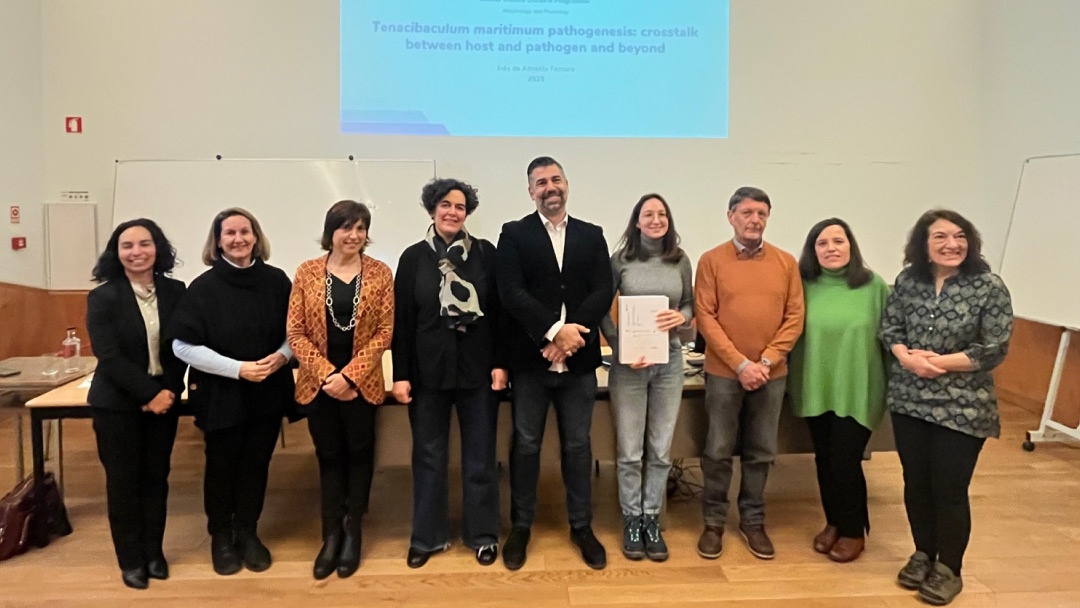 Inês Ferreira (fourth from the right) with the thesis examination panel
Inês Ferreira (fourth from the right) with the thesis examination panel
Beating Tenacibaculum maritimum-the bacterium behind tenacibaculosis in European sea bass (Dicentrarchus labrax)-may be within reach, thanks to new insights into the pathogen’s tactics and the fish’s immune response. These findings come from a recent doctoral thesys by Inês Ferreira, a researcher at Portugal’s CIIMAR centre, who has successfully identified key proteins secreted by the bacterium and described in detail how the European sea bass’s immune system react to infection.
The study uncovered a set of protein used by tenacibaculum to invade the fish’s tissue and evade immune defences. This discovery is a crucial step toward developing more effective preventive measures, such as vaccines or targeted treatments aimed at the pathogen’s virulence factors.
Controlled infection trials revealed that the route of infection plays a decisive role in disease development. Only the fish exposed to immersion in the bacteria developed symptoms and suffered mortalities. In contrast, those injected directly into the abdominal cavity showed no lethal effects. These results highlight the skin and mucous membranes as the primary entry points for the pathogen-and as key battlegrounds in preventing infection.
Ferreira’s research also delves into the sea bass’ immune response, revealing a pronounced inflammatory reaction in the head kidney and mucosal tissues such as the skin, gills, and gut. Analysis of mucus and skin tissue showed an upregulation of enzymes linked to wound healing, while activity associated with maintaining tissue integrity declined. This combination suggests that, in addition to inflammation, the infection underemines the fish’s ability to preserve its external protective barrier.
These findings represent a significant step forward in understanding tenacibaculosis and improving its management in aquaculture. By identifying the molecular mechanisms involved in both infection and host defence, Ferreira’s work provides a strong scientific basis for developing more effective therapeutic and preventive solutions.
In a era of sustained growth in aquaculture and mounting pressure to ensure the sector’s sustainability, research like this is essential. It helps safeguard fish health, reduce economic losses, and bolster global food security.


